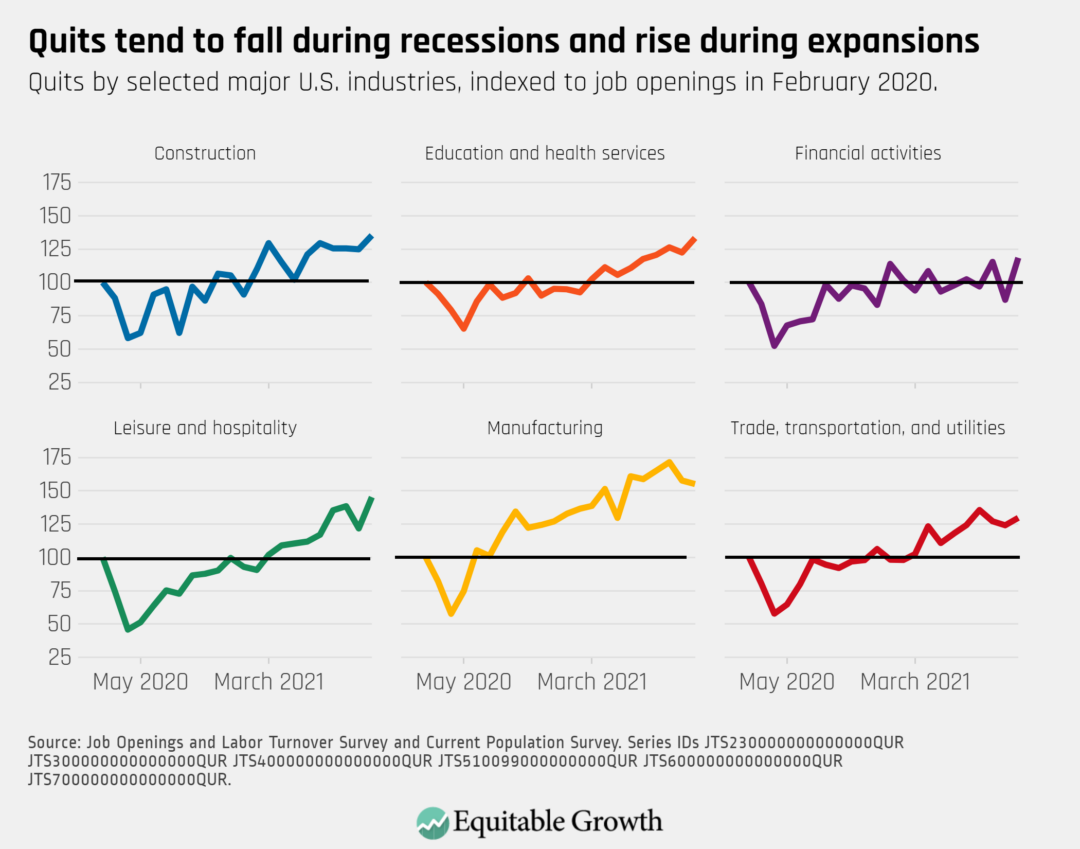JOLTS Day Graphs: November 2021 Edition
The quits rate rose in November to 3.0 percent as 4.5 million workers quit their jobs, an increase of 370,000 since October, while the job openings rate fell to 6.6 percent.
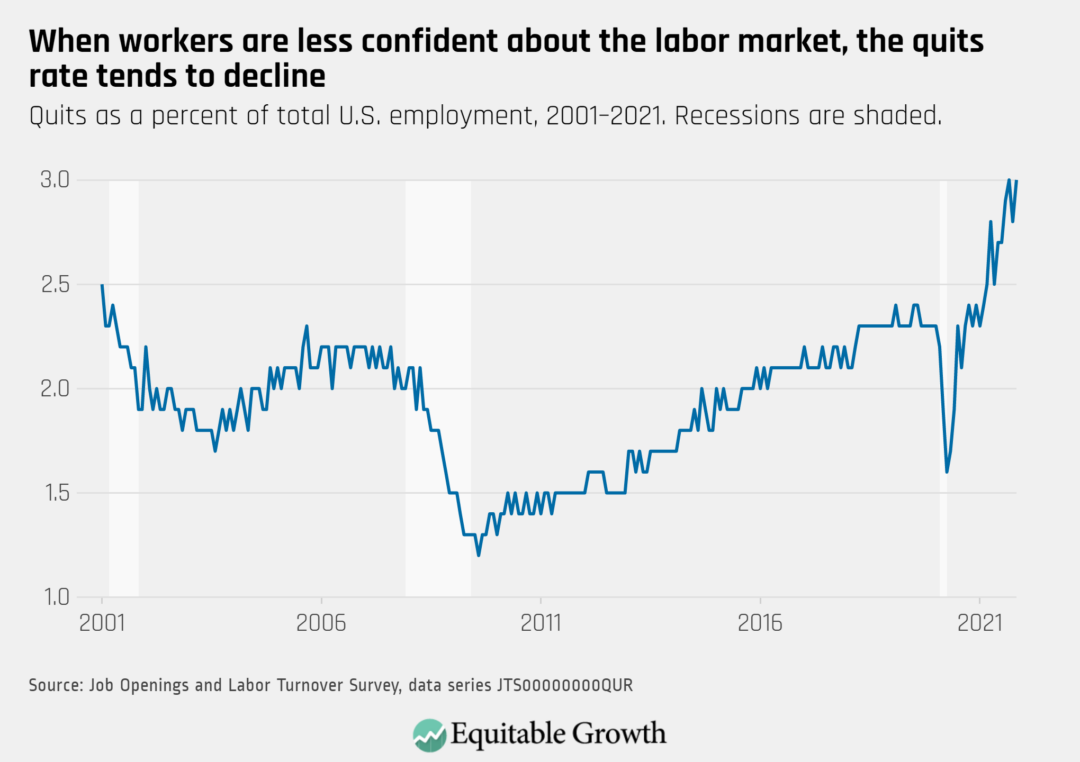
The vacancy yield increased to 0.63 in November from a series low of less than 0.59 in October, as job openings decreased to 10.6 million.
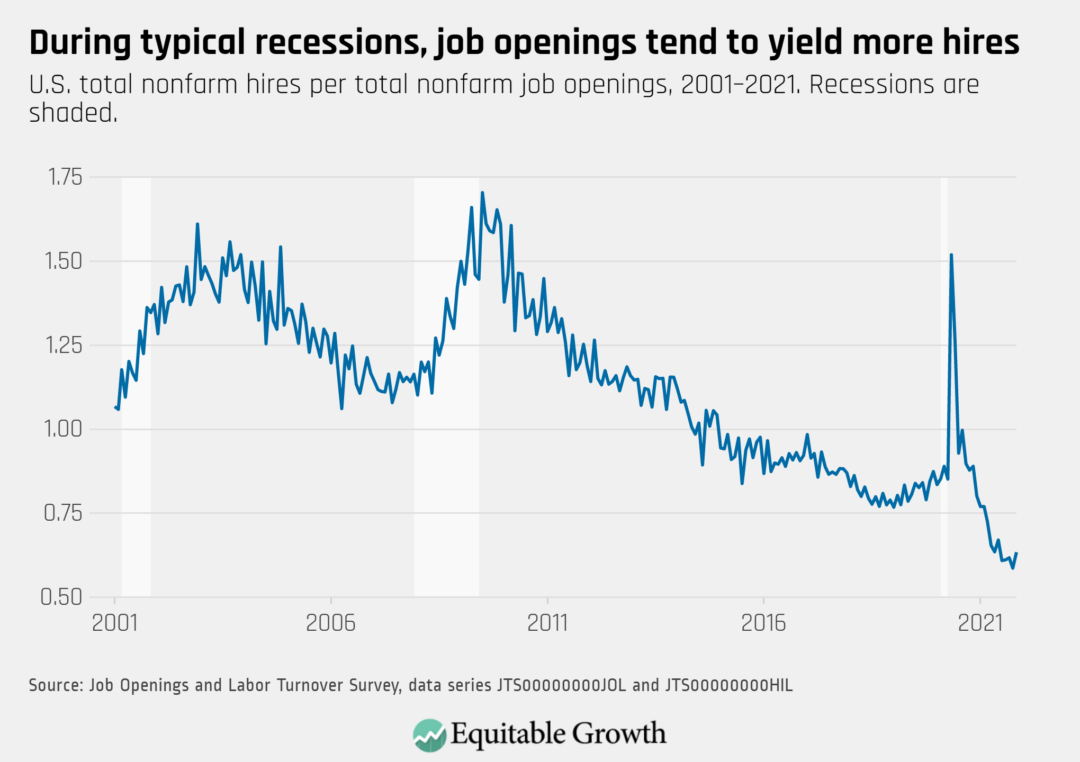
The ratio of unemployed-worker-per-job-opening fell further, from 0.67 unemployed workers per job opening in October to 0.65 in November.
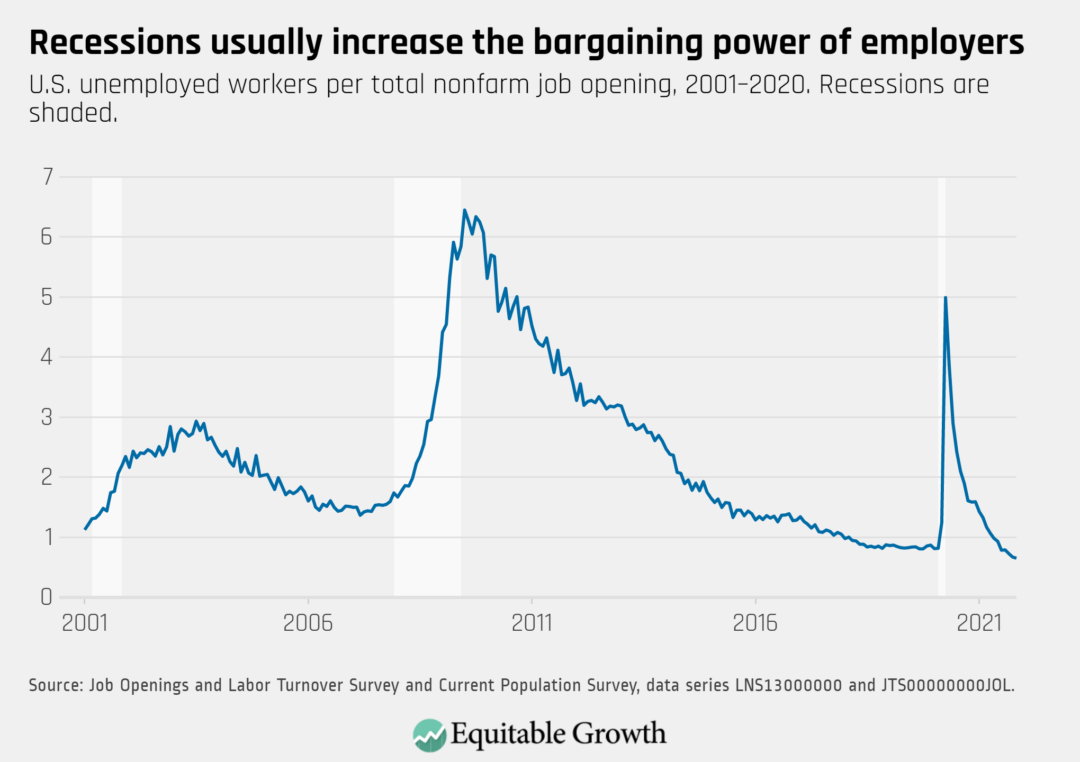
The Beveridge Curve continues to be in an atypical range compared to previous business cycles, as the unemployment rate declined to 4.2 percent and the rate of job openings decreased to 6.6 percent.
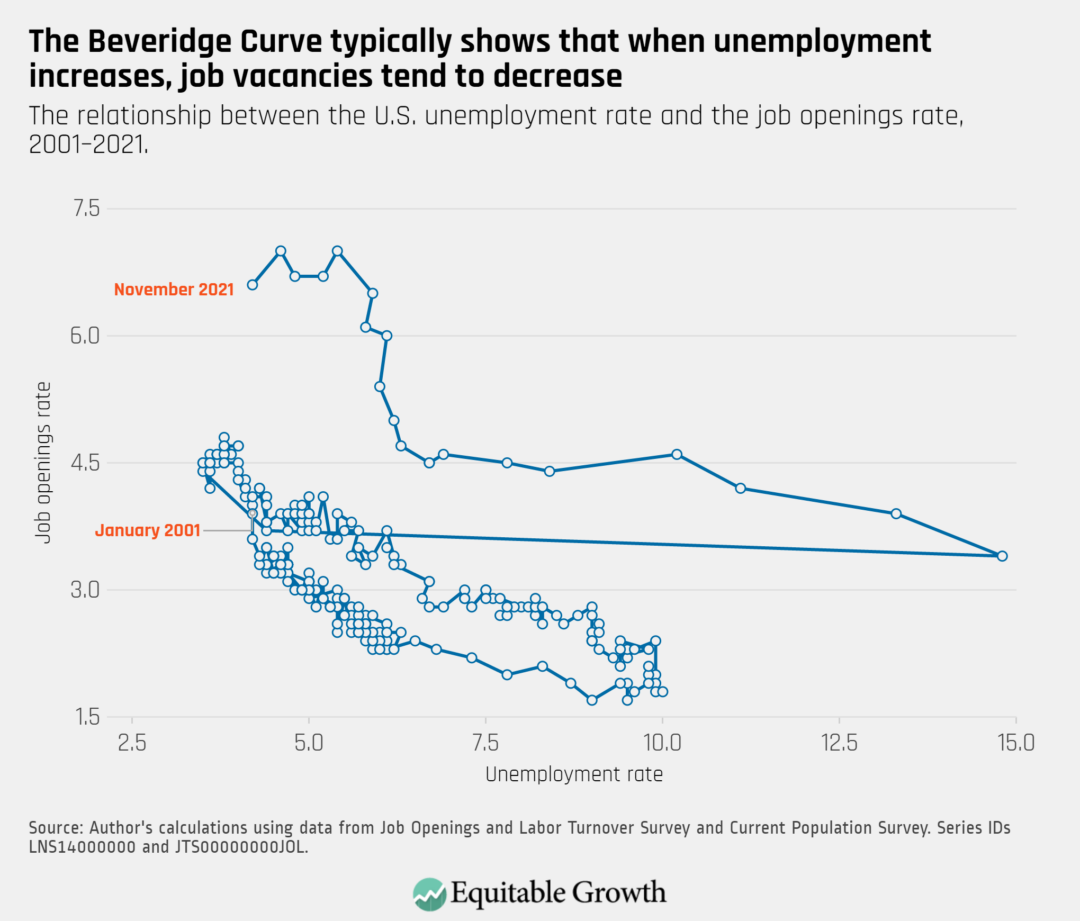
The quits rate rose in November and remains elevated in a number of industries relative to pre-pandemic levels, including construction, education and health services, and leisure and hospitality.
